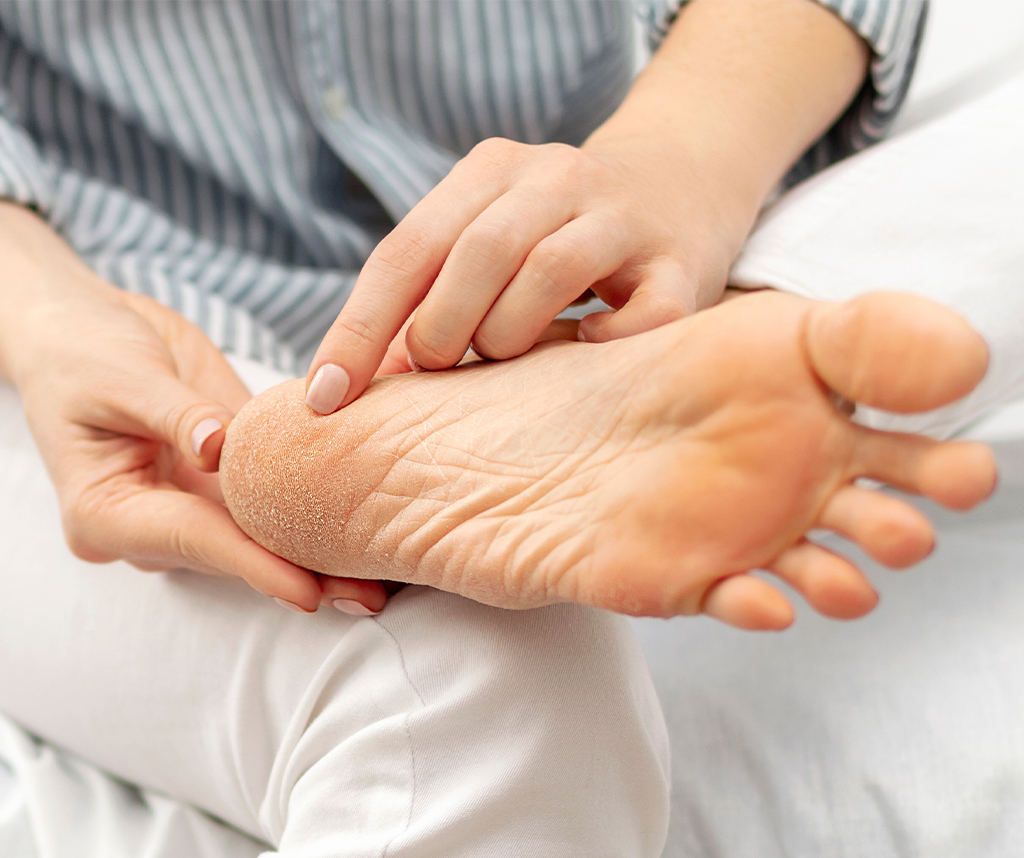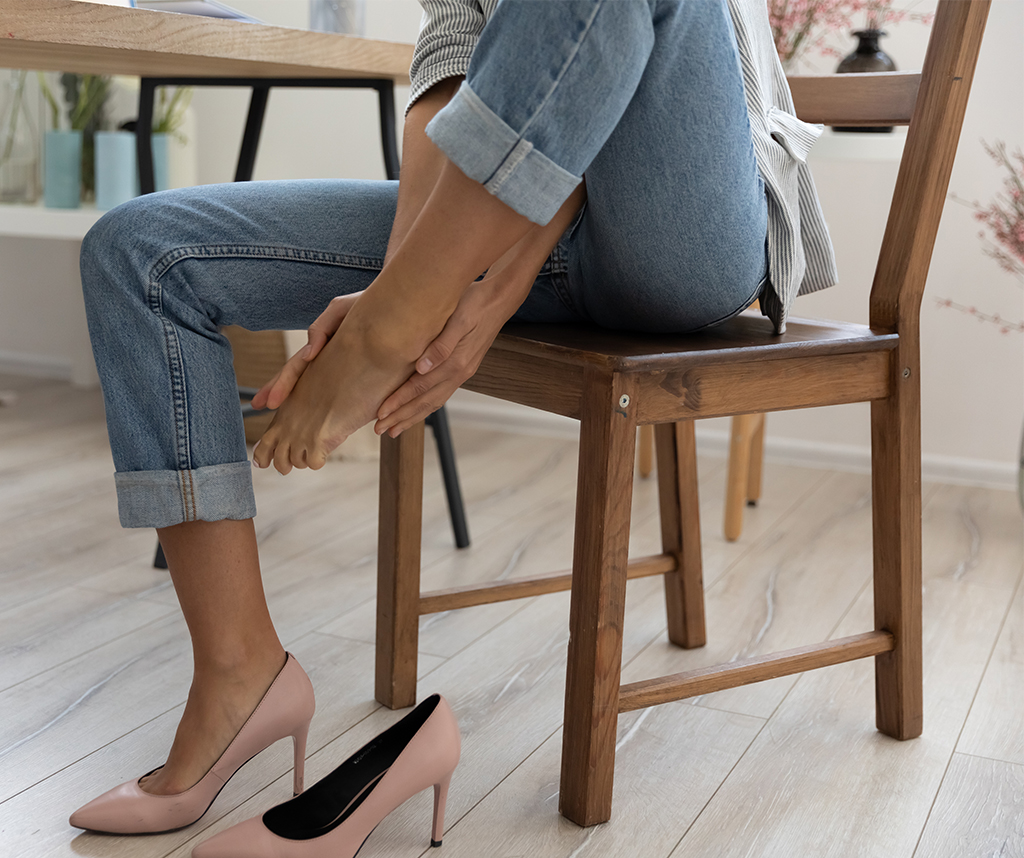How to remove callouses from our feet
Knowing how they form is the first step to prevent them from appearing, or at least minimising their effects. Callouses do not usually hurt, but if they do, it could be something else: if the layers of hard skin run deeper into the skin and the edges are more defined they could be corns, which will require different treatment.
If you are not sure, chiropodists can give us advice about the most suitable footwear depending on the way we walk, taking other disorders into account such as diabetes, deformities, poor circulation, etc., which can also affect them.
What are callouses on our feet?
Callouses on our feet are a thickening of the outer layers of skin in certain areas of our feet, such as the sole, heels or toes, both underneath, usually on the big toe, or above, usually on the knuckles of our toes. Why do callouses form? They are due to an increase in the dead and shed skin cells owing to continuous pressure in that area, meaning that more skin cells are produced to help protect us from sores.
How to identify them:
- Hard skin without defined edges.
- Yellowish colour (because of the build-up of keratin).
- Rough to the touch.
- Dryness.
- They do not usually cause pain or discomfort.

What causes them:
- Gait: if they always appear in the same place, it could be because of the way you walk.
- Footwear: inappropriate, pointed, narrow footwear, such as high heels apply pressure to your feet and toes and can cause callouses.
- Deformities: if you have a deformity of the foot, such as bunions or claw or mallet toes, you will be susceptible to callouses, since more pressure is applied between the skin and your shoes.
- Dehydration: dry skin is also a factor that can lead to callouses, particularly around the heels.
- Socks: if we do not wear socks, our skin rubs directly against the hard material of our shoes, causing callouses. If we do not put our socks on properly, or if they are creased, this can also cause callouses.

How to remove callouses from our feet at home?
Going to a chiropodist regularly will avoid callouses, but there are also homemade remedies to prevent them appearing if we following these guidelines:
- Pumice stone: exfoliating the dead skin will help prevent hard skin from appearing. It is important to only rub the surface, and if any sores or irritation appear, we should see a specialist. How to use pumice stones:
- It is advisable to soak your feet in warm water with soap for a while, or do it when we are in the shower since our skin will be softer and the callouses will be easier to remove. We should all have our own pumice stone rather than sharing them.
- Rub the stone around your heels and other areas where there is hard skin in circular movements to remove it more effectively.
- On healthy feet, we can do this three times a week.
- Wash the stone with soap and water each time you use it, and dry it well to avoid bacteria from forming.
- Pumice stones do not solve the problem of hard skin. It can be a complement for our foot care, but not a treatment. The stone removes the dead skin from the surface, but if we want them to disappear once and for all, we need to see a chiropodist.

- Wash and dry your feet well: this must be part of our daily hygiene routine.
- Daily moisturising: the use of moisturising cream or lotion containing 20-30% urea will help to prevent dryness, and also hard skin.
- Use of appropriate footwear: our shoes should be:
- Wide to prevent pressure on the toes.
- They should give support and stability with a rigid heel cap to secure our feet. We should also avoid thin soles.
- They should be made from high-quality, breathable materials.
- Avoid using heels (no more than 3-4 cm).
- Avoid using the same shoes all the time, change them so that pressure is not always applied in the same places.
How to get rid of callouses from our heels

Prevention is better than cure. We often spend all autumn and winter without paying much attention to our feet. That is until the good weather starts and we want to show them off without any ugly callouses. Callouses on our heels tend to be the most common, because our skin reacts when it is compressed and exposed to rubbing and friction, producing a higher amount of keratin. Sometimes, callouses on our heels can cause cracking, which also requires treatment.
Using a manual pumice stone or any of the electrical devices currently available on the market, and suitable hydration, can help to prevent hard skin, but when it does appear, we should go to a chiropodist for specific treatment and proper removal of these layers of hard skin using the right implements.
What do you think about?
Share comments, opinions and tricks with the Community







